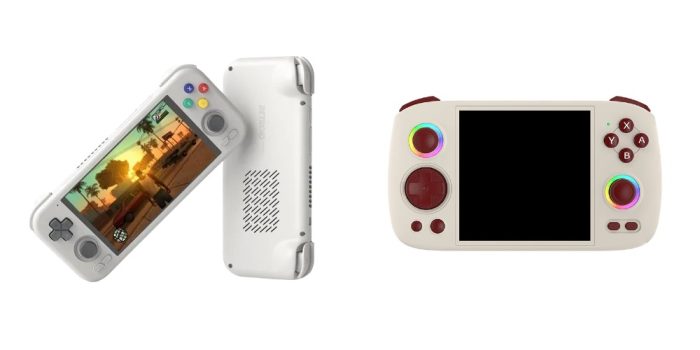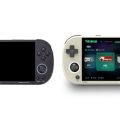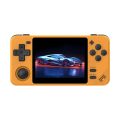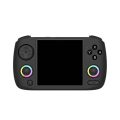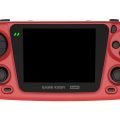When comparing portable gaming consoles, it’s essential to consider their performance, design, and usability. Today, I want to share my thoughts on two Android-based consoles that are highly regarded in the retro gaming community: the Anbernic RG Cube and the Retroid Pocket 4 Pro. While both devices share some similar specs, such as screen size, they differ in form factor, features, and overall user experience. Let’s get into the nitty-gritty of what makes each console stand out and how they perform head-to-head.
First Impressions and Design
Starting with the Retroid Pocket 4 Pro, I’ve had the privilege of using this device for a while now, and it continues to impress me. The overall build quality is fantastic, offering a premium feel despite its mid-range price. The materials used, particularly the tactile plastic, make it feel more expensive than it is. One of the standout aspects of the Pocket 4 Pro is its minimalist design. There’s no flashy LED lights or glowing joysticks, which is a relief for those who prefer a cleaner aesthetic. Personally, I prefer this more subtle approach, as it makes the console feel more like a serious piece of tech rather than a toy.
In contrast, the Anbernic RG Cube has a more unique design with its square, one-to-one screen ratio. It’s quite rare to find a handheld gaming console with such proportions, and the RG Cube’s layout makes it stand out visually. The screen is also a high-quality IPS display with a resolution of 720×720, which is decent for retro gaming, though the square aspect ratio means that many modern games might not display as naturally as they do on the Retroid Pocket 4 Pro.
One thing I did notice is that the Cube includes customizable LED lighting around the joysticks. While I’m personally not a fan of flashy lights on my devices, it’s a nice option to have if you like to add a bit of flair. Thankfully, the lights can be turned off or dimmed if you’re not into that look.
Performance and Game Compatibility
Now, let’s talk about what really matters: performance. The Retroid Pocket 4 Pro is powered by a MediaTek Dimensity 1100 processor, which is a beast for its price. It handles PlayStation 2 and PSP emulation at 2x resolution without breaking a sweat. Most of the PS2 titles I’ve thrown at it run smoothly, making it a great option if you’re looking for a device to handle more demanding emulation.
On the other hand, the Anbernic RG Cube is equipped with a Unisoc T820 processor, which is also capable but doesn’t quite match the Retroid Pocket 4 Pro in raw power. That said, the RG Cube manages to outperform its predecessor, the RG 556, likely due to the lower screen resolution. Since the Cube’s resolution is 720×720 compared to the RG 556’s 1920×1080, it seems to have a bit more headroom for smoother gameplay in retro titles. While it doesn’t match the Pocket 4 Pro’s PS2 emulation capabilities, it still holds its own with titles up to the PlayStation Portable era, especially at 1x resolution.
In terms of retro gaming, both consoles handle titles from older systems like the NES, SNES, and Game Boy Advance very well. However, due to the RG Cube’s square screen ratio, games on those systems don’t look quite as good as they do on the Retroid Pocket 4 Pro, which has a more conventional 16:9 screen ratio. The RG Cube will often have black bars on the sides, though you can tweak the settings to overlay images to fill in the space. However, stretched retro games on the RG Cube can look awkward, so I generally stick with the original aspect ratio, black bars and all.
Ergonomics and Usability
When it comes to comfort, the two consoles differ quite a bit. The Retroid Pocket 4 Pro, despite its flat surface, is relatively comfortable to hold for extended periods. However, it does lack any form of built-in grip, which might make longer gaming sessions less enjoyable, especially when your hands start to feel the strain of gripping the flat design.
The RG Cube, on the other hand, is much more ergonomic thanks to its rounded grip that fits snugly into the hand. Anbernic has even added small textured areas on the back, which gives you a more secure hold, especially during long gaming sessions. If you plan on playing for hours, the RG Cube may offer a more comfortable experience overall.
Game Testing: Retroid vs. Cube
I decided to put both consoles to the test by running one of the most demanding PS2 games, Need for Speed: Most Wanted. As expected, the Retroid Pocket 4 Pro outperformed the RG Cube, with smoother framerates and better visual quality at 2x resolution. The Retroid’s more powerful processor gives it the edge here, and the 16:9 screen ratio makes for a more immersive experience.
The RG Cube, while it didn’t perform quite as well, still managed to run the game at 1x resolution. The square aspect ratio, however, did pose some challenges. In games like Most Wanted, elements like the speedometer and map are positioned closer to the center of the screen, making the gameplay feel a bit more cramped. While it’s something you can get used to over time, it’s not as visually appealing as the widescreen layout of the Retroid.
Software Updates and Support
An interesting point to note is that Anbernic has been more proactive with updates for the RG Cube compared to its older models. Since owning the Cube, I’ve already received a software update that fixed a few bugs and improved performance. In contrast, my older Anbernic RG 556 never received any updates, which was disappointing. Retroid, on the other hand, has always been good about software support, so I’m not surprised the Pocket 4 Pro runs as smoothly as it does out of the box.
Final Thoughts
In the end, both the Retroid Pocket 4 Pro and Anbernic RG Cube have their strengths and weaknesses. If you’re after raw performance and the ability to emulate more demanding systems like the PS2, the Retroid Pocket 4 Pro is the clear winner. Its powerful hardware, combined with a more traditional widescreen layout, makes it the better option for most users.
That said, the RG Cube’s unique design, better ergonomics, and quirky screen ratio may appeal to gamers who want something different. It’s a solid choice for retro enthusiasts who prioritize comfort and are okay with slightly lower performance in exchange for a more distinctive console.
Ultimately, the choice comes down to what you value more: raw power and performance, or unique design and comfort. Either way, both devices offer a fantastic gaming experience for their price points, and you can’t go wrong with either option depending on your needs.
